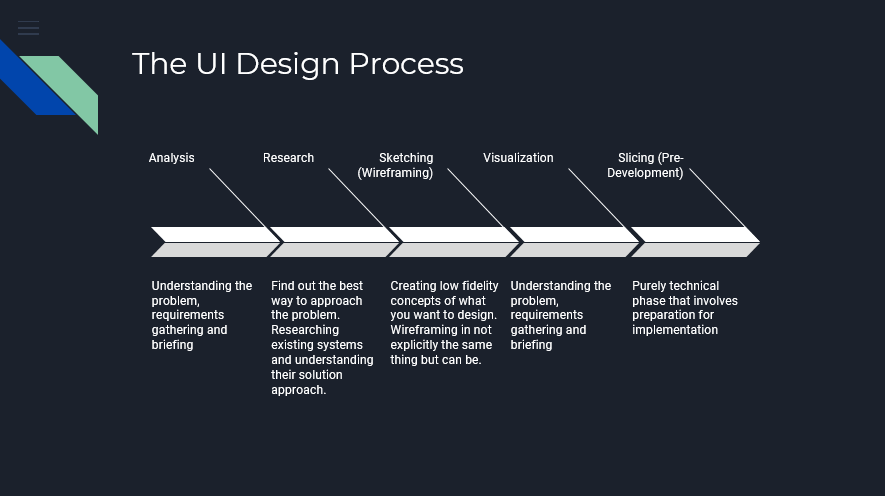WHAT IS UI DESIGN PROCESS?
User interface (UI) design is the process designers use to build interfaces in systems, software, focusing on looks or style. Designers aim to create interfaces which users find easy to use and pleasurable.
User interfaces are the access points where users interact with designs. This can be Graphical user interfaces (GUIs), Voice-controlled interfaces (VUIs), Gesture-based interfaces. UI Design process is an iterative method that helps you continuously improve and polish your designs. In the process, you go through different stages repeatedly while evaluating your designs/result on each stage.
THE UI DESIGN PROCESS

FOUR GOLDEN RULES OF UI DESIGN
Place users in control of the interface – Good UIs instill a sense of control in their users. Keeping users in control makes them comfortable; they will learn quickly and gain a fast sense of mastery.
- Make actions reversible – be forgiving
- Create an easy-to-navigate interface
- Provide informative feedback – be acknowledging
- Show the visibility of system status
- Accommodate users with different skill levels
Make it comfortable for a user to interact with a product
- Eliminate all elements that are not helping your users
- Don’t ask users for data they’ve already entered
- Avoid jargon and system-oriented terms
- Engineer for errors
Reduce cognitive load – Cognitive load is the amount of mental processing power required to use a product. It’s better to avoid making users think/work too hard to use your product.
- Chunking for sequences of information or actions e.g. 2348161620968 vs. (234) 816 162 0968
- Reduce the number of actions required to complete a task (three clicks rule)
- Promote visual clarity
Make user interfaces consistent – Consistency is an essential property of good UI—consistent design is intuitive design. Consistency is one of the strongest contributors to usability and learnability.
- Visual consistency (style)
- Functional consistency (behaviour)
- Consistent with user expectations (Follow platform conventions, Don’t try to reinvent terminology, Don’t reinvent patterns)
CONCLUSION
The goal for UI designers today is to produce user-friendly interfaces: interfaces that encourage exploration without fear of negative consequences. Without any doubt interfaces of the future will be more intuitive, enticing, and forgiving.
Thorough planning can go a long way to reducing your design and development costs when it comes to the various stages of UI design.
KDS by Daniel Obiekwe


